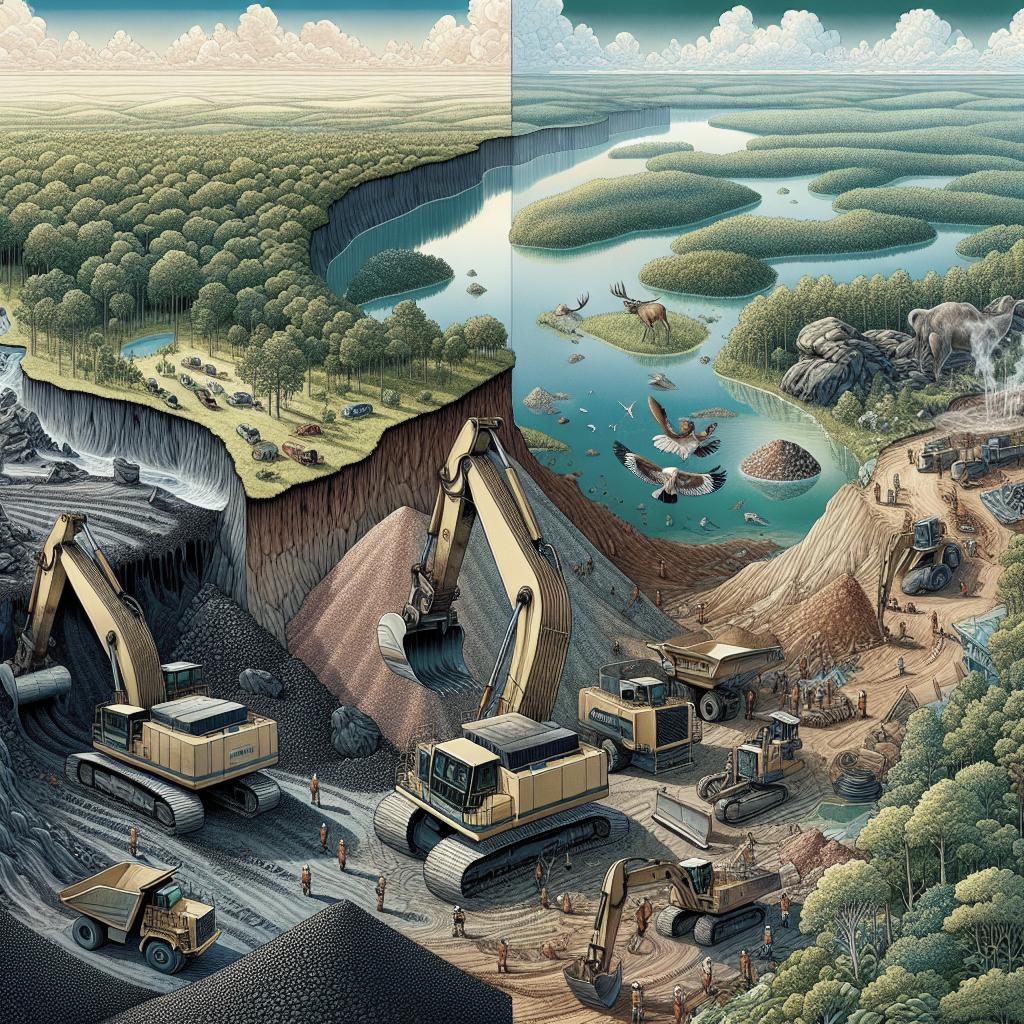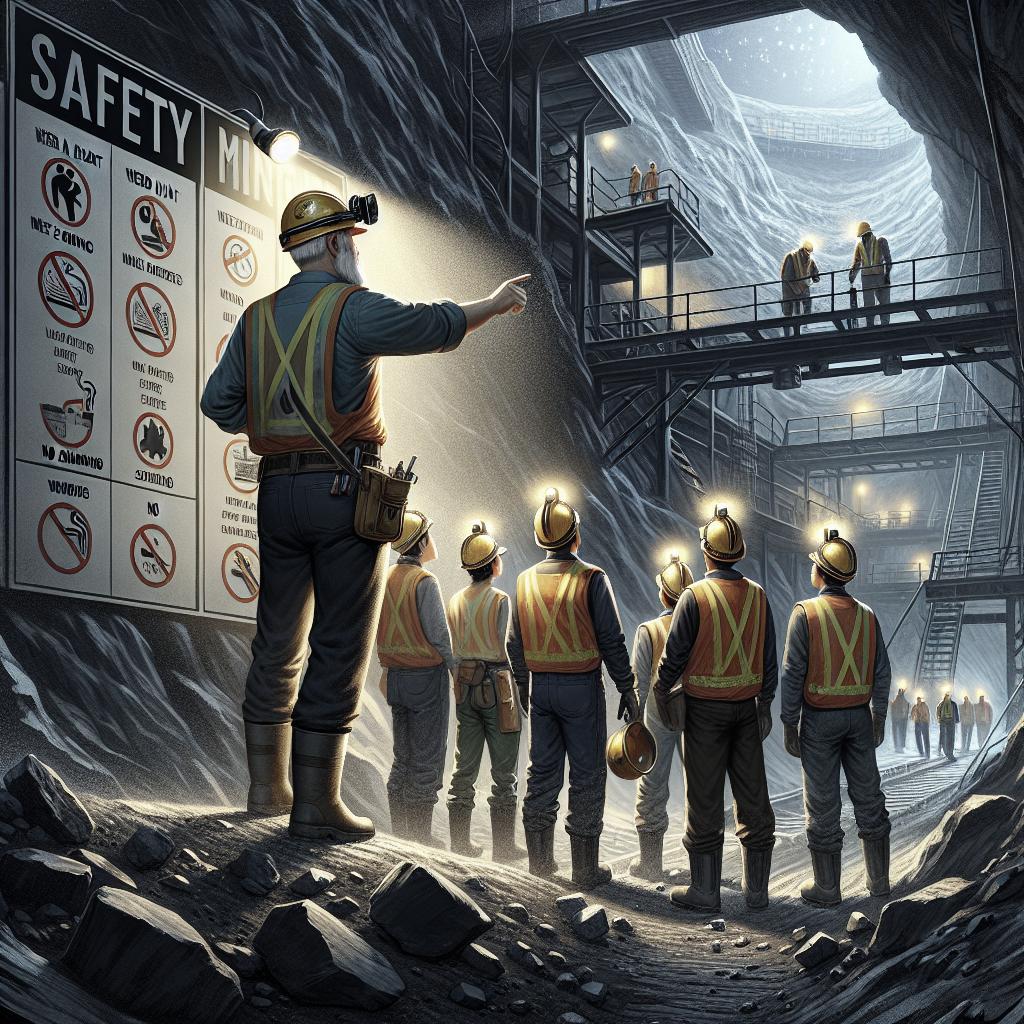< lang="en">
Mining is an integral part of the global economy, providing essential materials for consumer products, construction, and technological advancements. However, the environmental impact and social challenges associated with mining are significant. This blog post explores the profound impact of mining, discusses international and domestic regulatory challenges, and suggests potential win-win solutions. Moreover, we will provide resources for further reading and additional downloads that shed more light on sustainable mining practices.
The Impact of Mining
Mining activities contribute substantially to deforestation, water pollution, and loss of biodiversity. Land degradation and habitat destruction are common outcomes of open-pit mining, posing severe risks to local ecosystems. Notably, the release of toxic substances, such as mercury and cyanide, during mining processes can contaminate water sources, threatening both human health and aquatic life.
Moreover, mining often affects the livelihoods of local communities, leading to displacement and socio-economic disparities. Traditional livelihoods, such as agriculture and fishing, may be disrupted due to land acquisition and environmental changes caused by mining operations. Consequently, it is imperative to consider both ecological preservation and community welfare in mining activities.
The Challenge of International Mining Governance
International mining governance is fraught with challenges due to varying regulatory standards and enforcement capabilities across countries. While developed nations often have stringent guidelines to minimize environmental impact, many developing countries lack rigorous regulatory frameworks. This disparity can lead to exploitation and unsustainable practices in regions with weaker governance.
International treaties and agreements, such as the Extractive Industries Transparency Initiative (EITI), aim to bolster governance by promoting transparency and accountability. Nevertheless, effective implementation and enforcement mechanisms are required to ensure compliance and foster sustainable mining practices globally.
The Challenge of Domestic Regulation
Domestic regulation of mining activities plays a crucial role in achieving sustainability. However, balancing economic growth with environmental protection is a complex task. Regulatory bodies often face pressure from both industry stakeholders and environmental groups, leading to contentious policy decisions.
Effective domestic regulation should encompass stringent environmental impact assessments, robust monitoring systems, and public participation in decision-making processes. Strengthening legal frameworks and enhancing the capacity of regulatory agencies are essential to enforce compliance and mitigate the negative impacts of mining.
Forging Win-Win Solutions
Innovative technologies and practices are key to forging win-win solutions for the mining industry and the environment. For example, implementing cleaner production techniques, such as bioleaching and phytoremediation, can reduce environmental impact. Additionally, embracing renewable energy sources for mining operations can help decrease carbon footprints.
Collaboration between stakeholders, including governments, mining companies, local communities, and environmental organizations, is vital for sustainable mining outcomes. Multi-stakeholder partnerships can facilitate knowledge sharing, capacity building, and the development of best practices tailored to specific regional contexts.
Works Consulted
- Extractive Industries Transparency Initiative (EITI) Reports
- World Bank Publications on Mining and the Environment
- Environmental Impact Assessment (EIA) Guidelines
- International Council on Mining and Metals (ICMM) Reports
Additional Downloads
- Sustainable Mining Guidelines
- Case Studies on Mining Communities
- Reports on Renewable Energy in Mining
Funded By
This blog post was funded by grants received from:
- Global Environment Facility (GEF)
- World Resources Institute (WRI)
- United Nations Development Programme (UNDP)
Deep Dive Details
For readers seeking a more detailed analysis, we recommend exploring:
- Technical papers on bioleaching and phytoremediation techniques
- Comprehensive reviews of international mining regulations
- Research articles on the socio-economic impacts of mining
Final Thoughts
| Header | Content Summary |
|---|---|
| The Impact of Mining | Explores environmental and social implications of mining activities. |
| The Challenge of International Mining Governance | Discusses varying global regulatory standards and the role of international agreements. |
| The Challenge of Domestic Regulation | Highlights the complexities of implementing effective mining regulations at the national level. |
| Forging Win-Win Solutions | Describes innovative technologies and multi-stakeholder collaborations for sustainable mining practices. |
| Works Consulted | Lists key sources and reports consulted for the blog post. |
| Additional Downloads | Provides links to supplementary materials and guidelines. |
| Funded By | Notes the organizations that provided funding for the blog post. |
| Deep Dive Details | Recommends further reading and resources for an in-depth understanding. |


